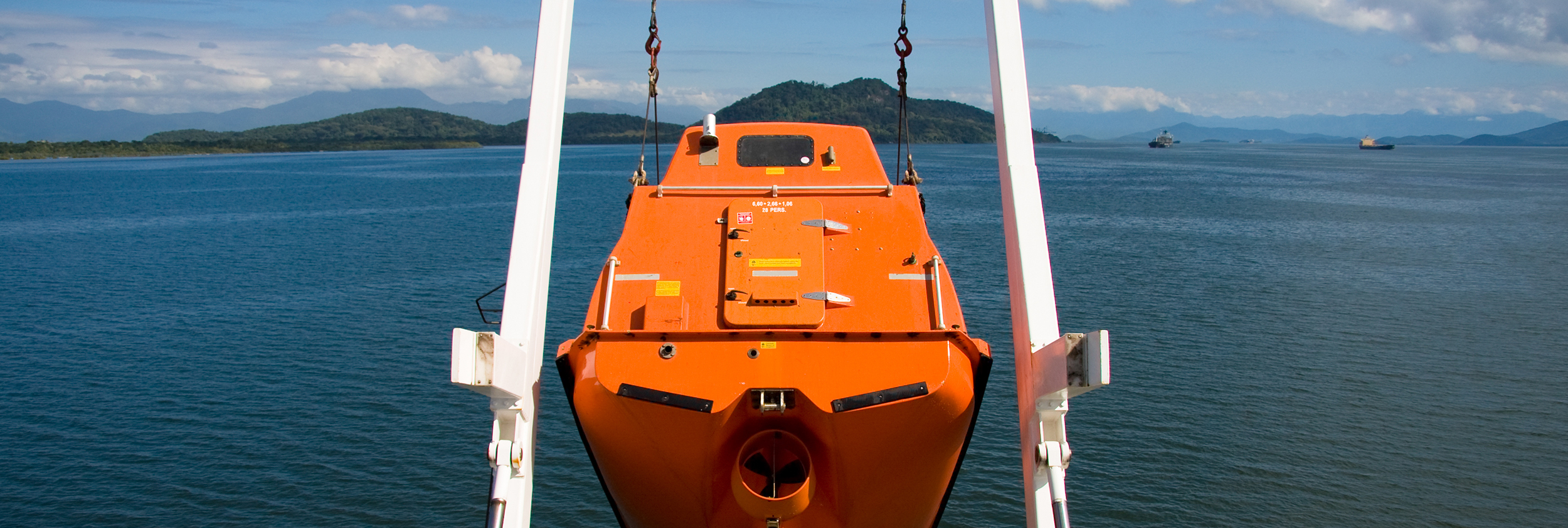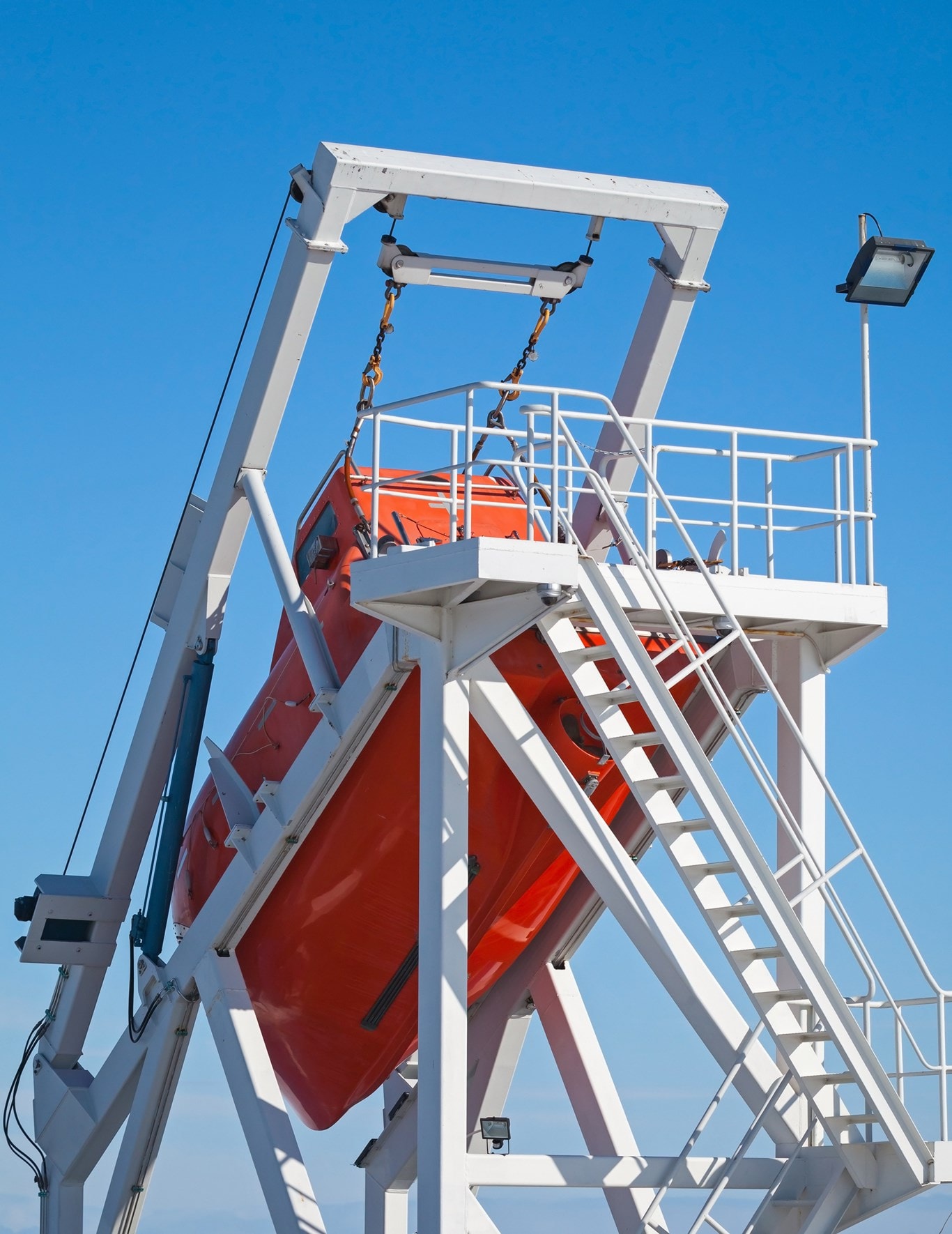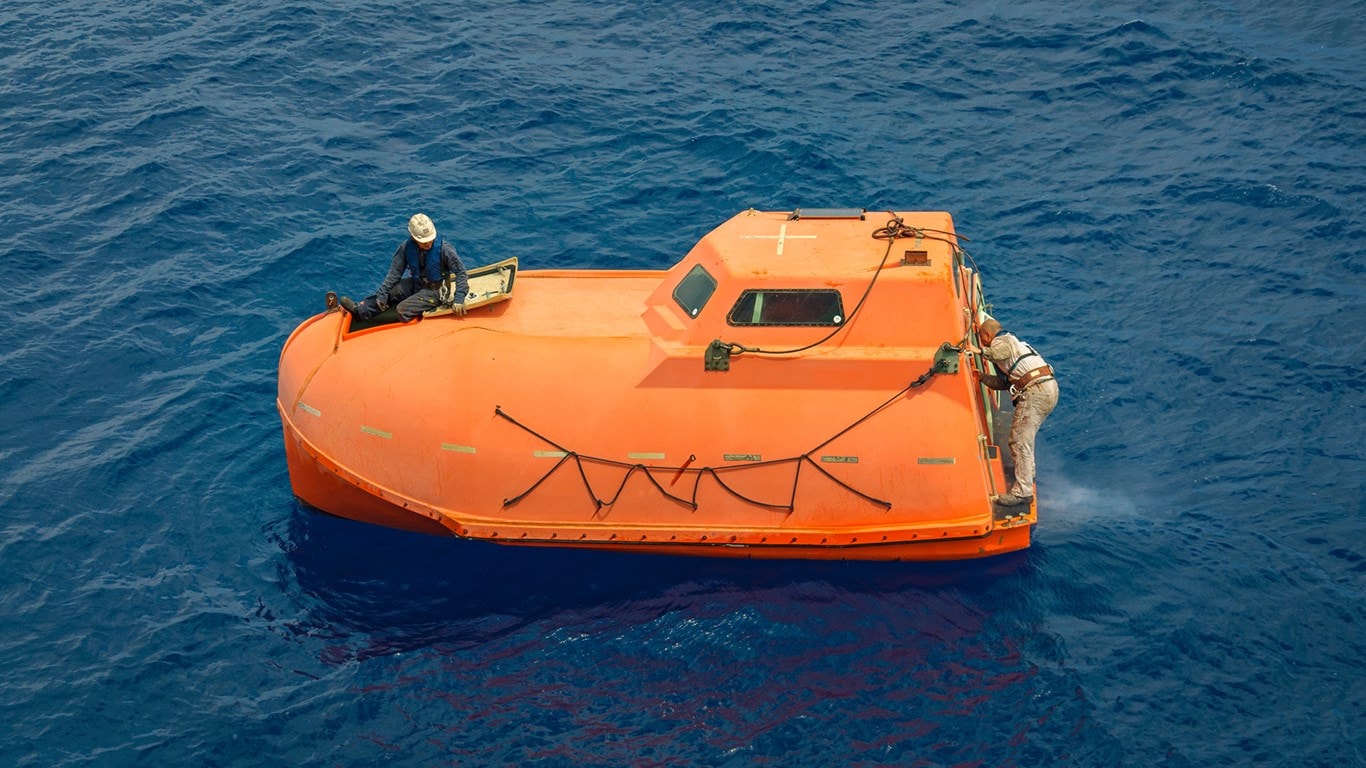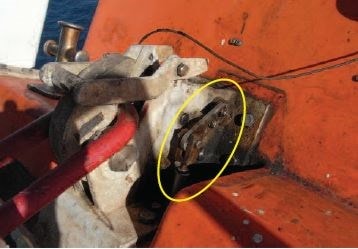
Inadvertent Release of a Freefall Lifeboat
Loss Prevention Bulletin
The Australian Transport Safety Bureau (ATSB) has recently published a preliminary report regarding the inadvertent launch of a freefall lifeboat from a geared handymax bulk carrier while on a ballast passage in the Indian Ocean.
Incident

Freefall lifeboat and davit arrangement
Release and Securing Arrangements


Lifeboat hook arrangement secured to long link. Note the hydraulic ram and link arrangement (circled)
Recommendations
1. Resetting the hydraulic ram:
The vessel was fitted with a 27 person freefall lifeboat (JY-FN-5.8 type), davit (JYF55 type) and hook and release mechanism (model JX-4) all manufactured by Jiangsu Jiaoyan Marine Equipment Company. Vessels having the same or similar lifeboats or equipment are advised to ensure that the hydraulic ram is pushed back fully into its housing when resetting the hook following release. Marking the mechanism to indicate when the hydraulic ram has been reset correctly or adding other visual indicators may also be considered.2. Unauthorised use of the hand pump:
The lever of the hydraulic hand pump should never be operated unless launching the lifeboat or as part of a controlled test of the release mechanism, both of which should be authorised by the Master beforehand. Appropriate warning notices should be placed alongside each pump lever.3. Anti-tripping pin: